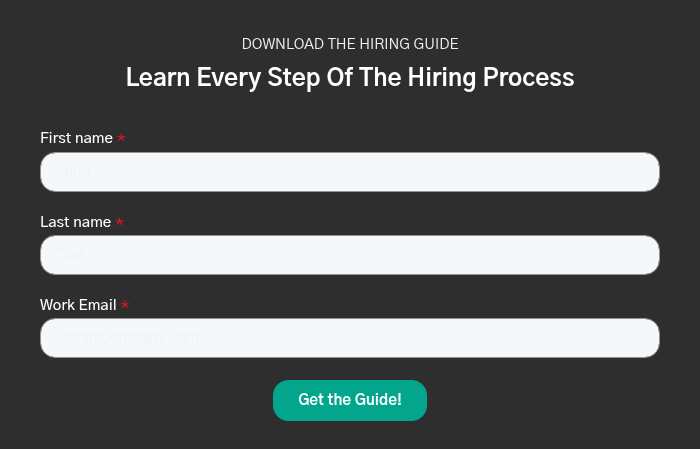
If you’re considering adding candidate assessments to your hiring process, you might think assessments are an easy way to get an unbiased view of candidates.
But when used incorrectly, candidate assessments can put candidates into narrowly defined profiles and can even open the door for inadvertent discrimination issues.
At The Metiss Group, we have taught clients how to use candidate assessments in the hiring process for multiple decades. We understand the critical balance required to use these tools effectively without undermining a candidate’s potential.
In this article, we’ll help you understand the common problems people have when using candidate assessments and teach you potential solutions.
Problem 1: You can’t rely too heavily on candidate assessments in the hiring process
The first problem with behavioral assessments is they cannot make up 100% of your hiring process. This is not only for government compliance, but it also makes logical sense.
Imagine you post a job, and for every qualified candidate, you email a link to take the assessment. If you like their assessment results, they move on to the next round. Every other candidate receives a rejection email.
When you use assessments this way, you could put your company at risk for discrimination charges. This is because rejected candidates could claim the assessment was the reason they were excluded from the process, instead of their qualifications, which goes against the law.
Candidate assessments should only make up at most 30% of your hiring process. Before sending out an assessment, you should give the candidate a phone screen, followed by an interview with key stakeholders. Other steps in the hiring process can include real work product assignments and reference checks.
This doesn’t just make legal sense, but it’s also logical. Assessments don’t tell you the whole story. Instead, they should help you drive the conversation. They help you understand which questions to ask a candidate.
For example, if an assessment reveals a weakness in systems judgment, you don’t just throw out that candidate’s application. After all, no one is perfect, and everyone has weaknesses. Instead, you can use those results to ask more informed questions during the interview process. Here’s an example:
“Please give me an example of a time you were surprised by the outcome of a project. How might you have anticipated that sooner? How could you apply those learnings to your next project?”
You'd want to listen for answers such as, “I now start with a more comprehensive project plan, review it with others on my team, and ask where things could go wrong.”
So in conclusion, remember not to rely too heavily on candidate assessments in the hiring process. If your only interaction with a candidate is an assessment link, then you’re not only exposing your organization to unnecessary risk, but you’re also missing out on great candidates.
Problem 2: Candidate assessments are never 100% accurate
Most assessments are based on an inductive science and those have no more than an 85% face validity, which is the degree to which one perceives an assessment to measure something accurately.
Even though 85% is highly accurate, it’s still imperfect. That’s why it’s important to use multiple sciences.

The TTI Success Insights TriMetrix candidate assessment looks at three sciences.
- Hartman: What a candidate does
- Motivators: Why they do things
- DISC: How they do things
When used alone, no single science could accurately tell you what a candidate will do. But when all three sciences are combined, you can see a better picture of what they will do.
Problem 3: Many candidate assessments don’t show a candidate’s ability to adapt
Let’s say you give a candidate a behavioral assessment, which reveals they have a highly dominant behavioral style. Everything else about the candidate seems great, but you’re worried about them clashing with others in this particular role.
Don’t dismiss the candidate just yet. If that candidate is smart, they probably know how to tone things down in the workplace.
When you only look at a candidate’s natural style, you might draw unfair conclusions.
For example, we had one client who worked in engineering who had been told his entire life he shouldn’t work with people. Then his emotional intelligence 360 assessment revealed he was great with people. He had just been pigeonholed into the stereotypical engineering behavioral style.
Some assessments, like TTI Success Insights TriMetrix, will show you a candidate’s natural style vs. their adapted style. This will give you a better idea of how candidates will behave in the workplace.
You can also test a candidate’s cognitive ability. We have found that those who perform well on cognitive tests have a much greater ability to adapt.
Problem 4: Candidate assessments only evaluate the normal person, not those who intentionally skew results
When giving an assessment to a candidate in the hiring process, you have to assume the candidate is telling the truth.
Assessments can only assess a normal person in a normal work setting. It won’t identify someone’s tendency to lie or steal.
A typical DISC profile shows distinctly high or low results between the four traits.
There are a few red flags to look for, though. One is the amount of time it takes to complete the assessment. If a candidate takes 45 minutes to complete a 10-minute assessment, chances are they turned to Google to determine the “right” answers.
Another red flag is a flat or “compressed” DISC profile. This means a candidate’s behavior shows equal weight in Dominance, Influencing, Steadiness, and Compliance.
Typically, candidates will show distinctly high or low results between the four traits. Only 3% of the population would have a flat DISC profile.
So if their profile is flat, they may have been trying to game the system and show that they’re skilled in everything.
Problem 5: Understanding candidate assessment results can be complicated
Understanding candidate assessments can feel overwhelming, so many companies looking to use assessments in their hiring process may consider hiring someone to guide them through the process.
Take a look at a sample “TriGraph” from TTI Success Insights. Without a guide, it’s difficult to understand what each result means and how they affect each other.
Let’s be clear — we at The Metiss Group offer this service through our program Hiring Process Coach™, so we know we’re biased. But we feel strongly that every company should do what’s best for its hiring process, so we’ll try to be as transparent as possible.
Many companies who do not wish to work with a hiring process coach might consider using a simple, single-science assessment, such as Predictive Index. It’s easy for both employers and employees to understand, and it only looks at behaviors.
On the other hand, The Hhiring Process Coach™ will help you understand a multi science approach. Humans are complex, so only looking at behaviors will show just part of the broader picture.
Using a multi science approach (like the assessments from TTI Success Insights TriMetrix) will give you insights into behavior, motivators, and capacities. You can pair this with a Watson-Glaser cognitive test to understand how well that candidate can adapt.
Our expert coaches at The Metiss Group not only will help you understand the assessment results, but they will also teach you which follow-up questions to ask a candidate based on their assessment results. Again, nobody’s perfect, and everyone has weaknesses. So having these conversations will help you understand
- If the candidate has overcome their weaknesses in the past
- If they have self-awareness
- If the have committed to a personal development plan
- Or if this will be a deal-breaking issue
The bottom line about using candidate assessments in the hiring process
Using candidate assessments can add immense value to your hiring process, but only once you understand their limitations. Once you understand that candidate assessments are never completely accurate and shouldn’t make up the entirety of your hiring process, then you can strategically use the results to drive intentional conversations with your candidates.
At The Metiss Group, we help clients build stronger, more informed hiring processes by making assessments a tool, not the rule, in finding the best talent for their teams.
Now that you understand the problems with using candidate assessments when hiring, next you should learn about how The Hiring Process Coach™ will help you utilize these assessments.

Topics:
